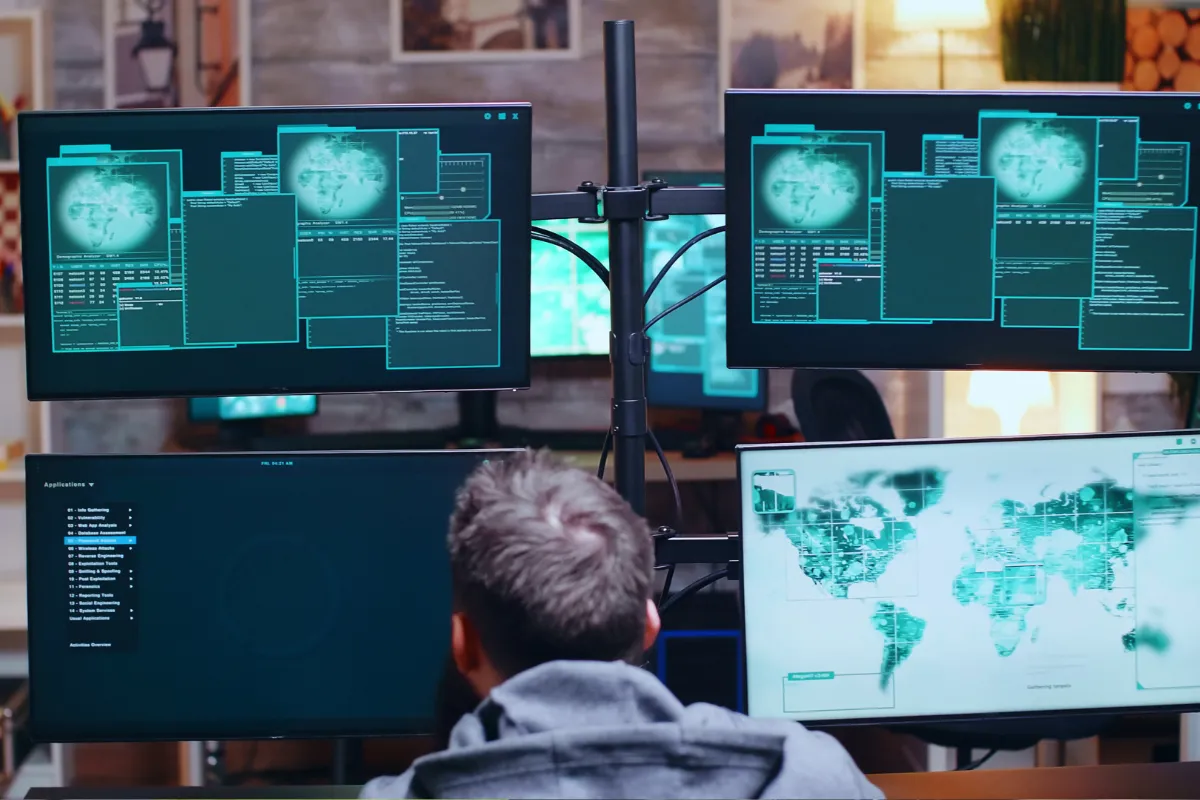
Maintenance data used to live on paper logs, clipboards, and spreadsheets buried in an office drawer.
Today, it lives in cloud-based systems, accessible from mobile devices, integrated with IoT sensors, and shared across multiple locations. This digital transformation has unlocked incredible efficiency, but it has also introduced new vulnerabilities: cybersecurity threats.
What happens when a facility’s maintenance data — work orders, asset performance logs, inventory tracking, and predictive maintenance schedules — fall into the wrong hands? A cyberattack on maintenance software isn’t just an IT problem; it can disrupt operations, compromise critical systems, and even put people’s safety at risk.
Facility managers overseeing large enterprises must not only think about keeping their equipment running but also about keeping their data safe.
We’ll explore the intersection of preventive maintenance and cybersecurity, the risks lurking in digital maintenance management, and how facility managers can protect their organizations from cyber threats.
The rise of digital maintenance management and the growing cyber risk
Facility managers have embraced Computerized Maintenance Management Systems (CMMS) and Enterprise Asset Management (EAM) platforms to streamline operations. These platforms centralize maintenance data, automate scheduling, and provide real-time visibility into asset performance. They reduce downtime, optimize resources, and help teams work smarter — not harder.
However, as maintenance operations shift to digital platforms, they become more attractive targets for cybercriminals. Consider this:
- Maintenance teams frequently use mobile devices to access work orders and equipment data, which can be exploited if not secured.
- IoT-connected assets, like HVAC systems and security cameras, provide remote monitoring capabilities but also create new entry points for hackers.
- Facility data often integrates with broader enterprise systems (ERP, procurement, energy management), increasing the risk of cross-platform vulnerabilities.
What’s at stake? A ransomware attack could lock facility managers out of critical maintenance data, leading to prolonged downtime. A data breach could expose proprietary asset performance metrics or facility blueprints. And a hacked IoT system could give cybercriminals control over building automation systems, turning the digital advantages of maintenance management into major security liabilities.
Why cybercriminals target maintenance data
Most facility managers don’t think of maintenance data as sensitive information, but it holds more value than meets the eye. Cybercriminals are interested in maintenance systems for several reasons:
-
Operational disruption for ransom
Imagine a logistics hub where conveyor belts, temperature-controlled storage, and loading dock doors all rely on scheduled maintenance. If hackers encrypt the maintenance system with ransomware, teams lose visibility into upcoming service needs, work orders stall, and equipment failures multiply. Attackers know that the longer a facility remains offline, the higher the chance a company will pay the ransom to regain access.
-
Entry point to enterprise networks
Many CMMS and EAM platforms integrate with other enterprise software—supply chain management, HR systems, financial platforms. Cybercriminals often see maintenance software as a low-security backdoor to higher-value data. By infiltrating a CMMS, they can move laterally into financial records, employee data, and proprietary business intelligence.
-
Competitive and infrastructure espionage
For companies managing large facilities — such as manufacturing plants, data centers, or critical infrastructure — maintenance data can reveal operational weaknesses. Knowing how often a machine breaks down, what components are frequently replaced, or which locations struggle with compliance issues can give competitors or nation-state actors an edge. In extreme cases, bad actors could exploit vulnerabilities in building systems to sabotage operations.
5 ways facility managers can secure maintenance data
To keep maintenance data safe, facility managers must think beyond physical security and adopt a cybersecurity-first mindset. Here’s how:
-
Restrict access with role-based permissions
Not every technician needs access to every piece of data. Use role-based access controls (RBAC) to limit who can view, edit, and share maintenance records. This prevents unauthorized changes and reduces exposure if a user’s credentials are compromised.
Example: A maintenance technician may only need access to work orders, while a facility director can view system-wide performance metrics.
-
Secure mobile devices and endpoints
Facility managers and technicians rely on smartphones and tablets to access CMMS software, but these devices are prime targets for cybercriminals. Implement:
- Multi-factor authentication (MFA) for logins
- Automatic session timeouts to prevent unauthorized access
- Mobile device management (MDM) policies to enforce security update.
If a technician loses their phone, having remote wipe capabilities ensures sensitive maintenance data doesn’t fall into the wrong hands.
-
Regularly update and patch software
Cybercriminals exploit outdated software with known vulnerabilities. Ensure your CMMS, IoT-connected assets, and enterprise systems are regularly updated.
- If your maintenance software provider releases a security patch, apply it immediately.
- If using on-premise CMMS, conduct regular security audits to detect outdated components.
A “set-it-and-forget-it” approach to maintenance software security is a recipe for disaster.
-
Encrypt maintenance data in transit and at rest
When maintenance data is transmitted between devices, it should be encrypted to prevent interception. Likewise, data stored in cloud-based CMMS platforms should be encrypted at rest.
Tip: Look for platforms that use end-to-end encryption and zero-trust architecture, ensuring only authorized users can access sensitive records.
-
Train maintenance teams on cybersecurity best practices
Even the best security tools won’t help if employees unknowingly open the door to cyberattacks. Facility managers must educate maintenance teams on:
- Phishing awareness: Never click suspicious links in emails claiming to be from IT.
- Password hygiene: Use strong, unique passwords and avoid sharing login credentials.
- Physical security: Never leave tablets or laptops unattended in high-traffic areas.
A single compromised login could be the difference between smooth operations and a multi-day facility shutdown.
Future-proofing maintenance data security
The convergence of maintenance technology and cybersecurity will only become more critical in the coming years. As artificial intelligence (AI) and machine learning (ML) are integrated into predictive maintenance tools, protecting maintenance data from manipulation or corruption will be essential. Similarly, as more enterprises adopt digital twins — virtual replicas of physical assets — securing those models from cyber threats will become a top priority.
For facility managers, the best strategy is proactive defense. Just as preventive maintenance reduces the risk of equipment failure, preventive cybersecurity reduces the risk of data breaches. By implementing strong access controls, securing mobile devices, keeping software updated, encrypting data, and educating teams, enterprises can ensure their maintenance systems remain efficient, reliable, and secure.
A secure future for facility management
Facility managers are no longer just responsible for keeping the lights on and the HVAC running. They also play a critical role in cybersecurity. A compromised maintenance system can disrupt operations, expose sensitive data, and create safety risks. By taking cybersecurity as seriously as equipment uptime, facility managers can protect their organizations from both mechanical and digital threats.
The future of maintenance is digital. Let’s make sure it’s also secure. Get in touch with Eptura to find out more about how to make your maintenance data bulletproof.




